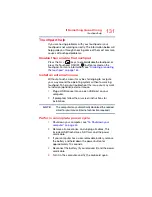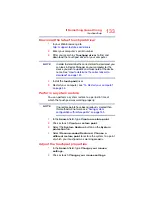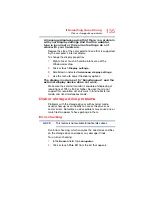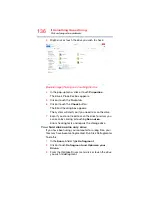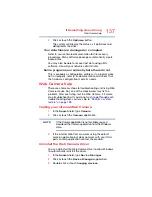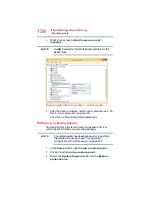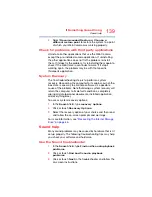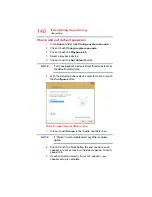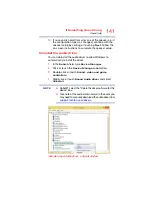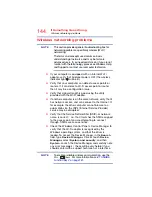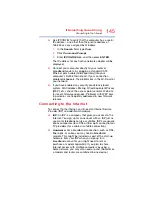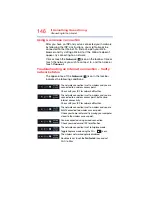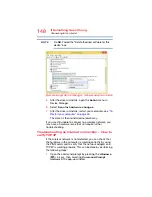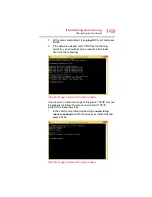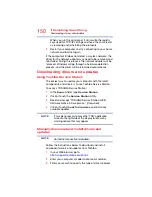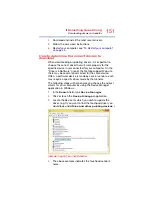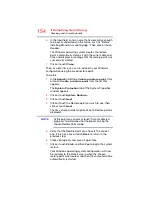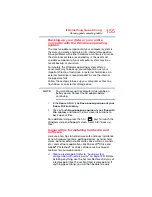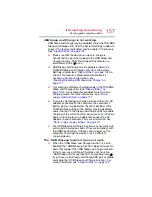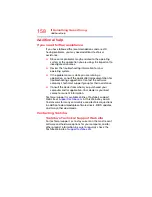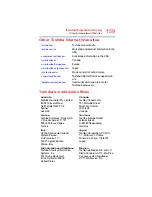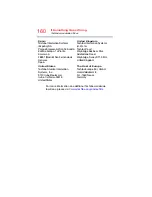
145
If Something Goes Wrong
Connecting to the Internet
❖
Use IPCONFIG to verify that the computer has a useful
IP address
-
one other than the private address of
169.254.xxx.xxx assigned by Windows.
1
In the
Search
field, type
Cmd
.
2
Click
Command Prompt
.
3
Enter
IPCONFIG/ALL
, and then press
ENTER
.
The IP address for each active network adapter will be
displayed.
❖
Connect your computer directly to your router or
broadband modem, by plugging a standard CAT5
Ethernet patch cable (sold separately) into your
computer's RJ45 Ethernet port. If your connection
problem disappears, the problem lies in the Wi-Fi part of
your network.
❖
If you have enabled any security provisions (closed
system, MAC address filtering, Wired Equivalent Privacy
[WEP], etc.), check the access point vendor's Web site
for recent firmware upgrades. Problems with WEP keys,
in particular, are frequently addressed in new firmware
releases.
Connecting to the Internet
To connect to the Internet, you'll need an Internet Service
Provider (ISP) and additional hardware.
❖
ISP:
An ISP is a company that gives you access to the
Internet. You sign up for an account with an ISP just as
you do for telephone service or utilities. ISPs are usually
phone companies (for a DSL or fiber optic connection) or
TV providers (for a cable or satellite connection).
❖
Hardware:
For a broadband connection, such as DSL,
fiber optic, or cable, you may need a broadband
modem. This might be included as part of the start-up
hardware from your ISP when you sign up for a
broadband account or you might need to rent or
purchase a modem separately. If you plan to share
Internet access with multiple computers by using a
home network, you may also need a router. (Sometimes
a modem and router are combined in one device.)

